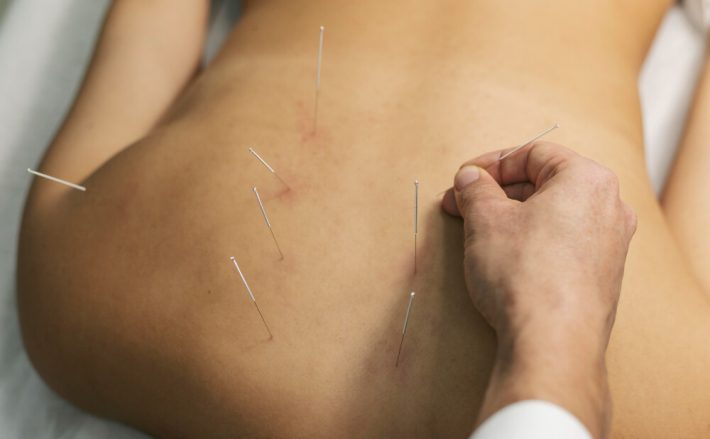
Dry needling is now common in Australian physiotherapy for stubborn headaches and jaw pain. The technique uses a very fine, solid needle to target sensitive spots in muscle known as trigger points. By disrupting these tight, irritable bands, clinicians aim to settle local pain and restore easier movement. People living around Morley often ask whether it is worth trying for migraines or a sore, overworked jaw. The short answer is that some do well, especially when muscle tension is part of the problem, but results vary and it works best within a broader plan.
How dry needling may help
When a needle touches a trigger point, patients often feel a deep ache or a brief twitch. Research suggests this can change how the muscle behaves in the short term. In people with temporomandibular disorders, a laboratory study found that dry needling increased oxygenation within the masseter, a key chewing muscle, which may relate to symptom relief after treatment.
For headaches, the science is strongest in tension-type and neck-related headaches. A respected systematic review in Physical Therapy reported reductions in pain and disability when dry needling was added to care in these groups, though specific protocols differed between studies. A randomised trial in cervicogenic headache also showed improvements in pain and neck movement, even if the size of the benefit was modest.
Also Read – Understanding Dry Needling: How It Can Help Relieve Muscle Pain and Tension
What about migraine?
Migraine has a complex neurological basis, so no single hands-on technique will cover every case. That said, when neck and scalp muscles are contributing to attacks, easing trigger points can reduce overall load. Reviews that include migraine show possible benefit for some patients, but the evidence is thinner and less consistent than for tension-type headache. A practical approach is a short, time-limited trial alongside your GP or neurologist’s plan, with clear goals like fewer headache days or gentler intensity.
If you are looking for options close to home and running a search for dry needling Morley, keep an eye out for clinics that assess the neck and jaw thoroughly and explain how needles fit with exercise, sleep and stress strategies. An assessment-led program beats a one-off quick fix every time.
Jaw pain and temporomandibular disorders
Jaw pain linked to temporomandibular disorders (TMD) often involves sensitive muscles such as the masseter and temporalis. Evidence here is mixed.
- A network meta-analysis comparing dry needling with manual therapy reported improvements in pain and pressure-pain thresholds, although findings varied across trials.
- A separate recent systematic review of orofacial pain flagged that convincing proof remains limited overall, so expectations should be realistic. The clearest pattern in the research is that combined care tends to perform best.
In practical terms, that means your physio may pair needling with jaw-friendly habits, relaxed mouth opening, gentle strength work and pacing for chewy foods. If you are in neighbouring suburbs and you come across Beechboro dry needling during your search, evaluate providers on their full plan, not just whether they use needles.
Safety, training and informed consent
When performed by trained clinicians, dry needling is considered low risk, but it is not risk-free.
The Australian Institute of Sport’s guideline outlines minimum training, hygiene standards and clear steps to reduce rare complications such as pneumothorax. Patients should be informed about common reactions like temporary soreness, as well as rare but serious risks, before consenting.
The Australian Physiotherapy Association also highlights safe practice and open discussion of benefits and risks. Ask about a clinician’s training, how they clean the skin, and how they avoid risk in areas such as the chest and neck.
If you are checking local options and you see dry needling Noranda on a clinic page or map listing, look for mention of formal training and a clear consent process. Good providers make safety visible.
What to expect in a session
- A standard session starts with a history and physical assessment to identify likely drivers.
- After consent, the clinician cleans the skin and places the needle into the targeted trigger point. You may feel a dull ache or a brief muscle twitch.
- Soreness for 24 to 48 hours is common and usually settles with gentle movement and heat.
- Many clinicians follow the needling with light exercises to “lock in” the gain.
- Progress is best tracked with simple measures: headache diaries, jaw opening in millimetres, ease of chewing and sleep quality.
Who is most likely to benefit?
People whose symptoms flare with muscle tension tend to respond best. Clues include tender neck bands, headache that starts at the base of the skull, or jaw pain that eases with gentle massage or heat. Those with primarily joint-driven pain, nerve disorders or hormonally driven migraines may see smaller effects.
A careful assessment that screens for red flags and maps your triggers helps to decide whether needling deserves a trial. If you are searching for dry needling near me, prioritise clinics that explain this bigger picture and set measurable goals with you.
Take-home points
- Dry needling can reduce pain for tension-type and neck-related headaches, with modest evidence for migraine when muscle tension is a driver. Pair it with a broader care plan.
- For jaw pain and TMD, results are mixed across studies; combined care consistently looks more promising than needling alone.
- Safety rests on training, hygiene and informed consent. Ask providers of Noranda dry needling about their qualifications and risk management.
Dry needling may offer relief for certain types of headaches and jaw pain, especially when muscle tension is involved. While it’s not a cure-all, it can be a helpful part of a well-rounded treatment plan guided by proper assessment and clinical expertise. Want help to reduce headaches and jaw pain? Book an appointment at Morley Physio today.
